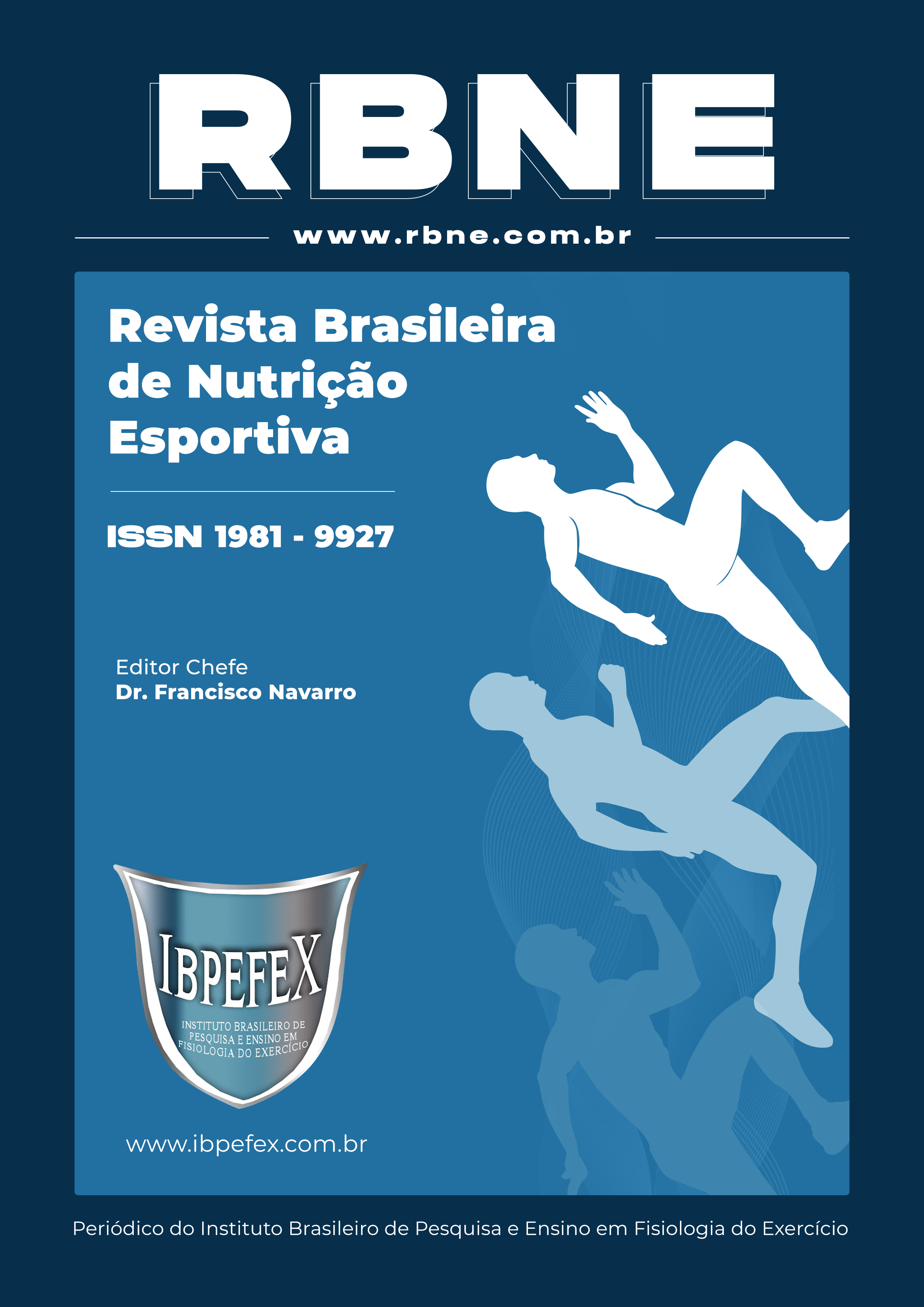Nutritional status and consumption of energy drinks among gym goers and non-gym-goers in Luanda, Angola
Abstract
Energy drinks, also consisting of carbohydrates and sugars, are known for their stimulating effects, both in improving muscle performance and psychostimulating effects, especially among physical activity practitioners and young people. Thus, the study sought to understand the relationship between the nutritional status and the consumption of energy drinks in individuals attending gyms and non-attending gyms in Luanda, Angola, through the inclusion of 204 male individuals, 102 for each group. The results showed that the most consumed drinks were coffee and the national energy drink "A", with a statistically significant association between the variables Body Mass Index (BMI) and age, p=0.002 in FG and p=0.001 in non-gym-goers, and between BMI and the time of consumption of energy drinks (p=0.01) in gym-goers, demonstrating that such variables seem to tend to change the nutritional pattern of individuals.
References
-Ágoston, C. et al. Why do you drink caffeine? The development of the motives for caffeine consuption quationnaire (MCCQ) and its relationship with gender, age and the types of caffeinated beverages. Int J Ment Health Addict. 2017.
-Ali, F.; et al. Energy drinks and their adverse health effects: A systematic review of the current evidence. Postgraduate Medicine. 2015.
-Ballistreri, M.C.; Corradi-Webster, C.M. O uso de bebidas energéticas entre estudantes de educação física. Latino-am Enfermagem. 2008.
-Bezerra, I.N.; Alencar, E.S. Associação entre excesso de peso e tamanho das porções de bebidas consumidas no Brasil. Rev Saude Publica. 2018
-Cangani, A.P.; et al. Determinação de cafeína e taurina em bebidas energéticas comercializadas em são paulo por eletroforese capilar. 2014.
-Casuccio, A.B.; et al. Knowledge, Attitudes, and Practices on Energy Drink Consumption and Side Effects in a Cohort of Medical Students. Journal of Addictive Diseases. 2015. p. 274-283.
-Curran, C.P.; Marczinski, C.A. Taurine, cafeine, and energy drinks: Reviewing the risks to the adolescent brain. Wiley periodicals. 2017. p. 140-148.
-Deliens, T.; et al. Correlates of University students soft and energy drink consumption according to genderand residency. Nutrients. 2015.
-Dossiê bebidas energéticas. Food ingredients Brazil . p. 36-47. 2012.
-FAO-OMS. General standard for food additives codex stan 192-1995. Codex alimentarius- International Food Standards.1997-2019.
-Ferreira, S.E.; et al. O efeito das bebidas alcoólicas pode ser afetado pela combinação com bebidas energéticas? um estudo com usuários. Rev Assoc Med Bras. 2004. pp. 48-51.
-Gaspar, S.D. Avaliação do risco da exposição a substâncias estimulantes (cafeína, taurina e glucuronolactona) em adolescentes do distrito de lisboa. Dissertação de Mestrado. Portugal. Coimbra. 2014.
-Glade, M.J. Caffeine-Not just a stimulant. Elsevier. 2010.
-Gutiérrez-Hellín, J.; Varilas-Delgado, D. Energy Drinks and Sports Performance, Cardiovascular Risk, and Genetic Associations; Future Prospects. Nutriens. 2021.
-Heckman, M.A.; Gonzalez de Mejia, E. Energy Drinks: An assessment of their market size, consumer demographics, ingredient profile, functionality, and regulations in the United States. Comprehensive Reviewa in Food Science and Food Safety. 2010.
-Jagim, A.R.; et al. International society of sports nutrition position stand: energy drinks and energy shots. Journal of the international society of sports nutrition. 2023.
-Jornal de Angola. Jornal de Angola. Jornal de Angola. 2019.
-Mahoney, C.R.; et al. Intake of caffeine from all sources and reasons for use by college studants. Clinical Nutrition. 2018.
-Manrique, C.I.; et al. Bebidas cafeínadas energizantes: efectos neurológicos y cardiovasculares. Iatreia. Vol. 31. Núm. 1. p. 65-75. 2018.
-Martins, J.S.; et al. Hábitos de consumo de álcool em estudantes do ensino superior universitário: alguns dados empíricos. Psychologica. p. 397-411. 2019.
-Mclellan, T. M.; Lieberman, H. R. Do energy drinks contain active components other than caffeine? Nutrition Reviews. Vol.70. Núm. 12. p.730-744730. p. 730-744. 2012.
-Morgan, H.L.; et al. Consumo de estimulantes cerebrais por estudantes de medicina duma universidade do extremo sul do Brasil: Prevalência, motivação e efeitos percebidos. Revista Brasileira de Educação Medica. 2017.
-Muwonge, H.; et al. Nutritional supplement practices of professional Ugandan athletes: a crosssectional study. Journal of the International Society of Sports Nutrition, p. 1-10. 2017.
-Nicholas, S.; et al. Energy drink consumption and marketing in South Africa. Preventive Medicine. 2017.
-Portaria n° 868, de 3 de nov. de 1998 da Secretaria de Vigilância Sanitária do Ministério da Saúde. Diário Oficial da República Federativa do Brasil, Poder Executivo. Brasília,-DF. Brasil. 1998.
-Salineiro, J. J. The use of enrergy drinks in sport: Perceived ergogeniciityy and side effects in male and female athletes. Britsh journal of nutrition. 2014.
-Striley, C.W.; Khan, S.R. Review of the energy drink literature from 2013:findings continue to support most risk from mixing. Current opinion Psychiatry. p. 263-268. 2014.
-Visran, S. Consuption of energy drinks by childrean and young people:A review examining evidence of physical effects and conusmer atittudes. BMJ Open. 2016.
-WHO. Physical Status: The and interpretation of Anthropometry. Geneva: World Health Organization. 1995.
Copyright (c) 2024 Lúcia de Fátima Chavito Massanga, Marli Stela Santana

This work is licensed under a Creative Commons Attribution-NonCommercial 4.0 International License.
Authors who publish in this journal agree to the following terms:
- Authors retain the copyright and grant the journal the right of first publication, with work simultaneously licensed under the Creative Commons Attribution License BY-NC which allows the sharing of the work with acknowledgment of the authorship of the work and initial publication in this journal.
- Authors are authorized to enter into additional contracts separately for non-exclusive distribution of the version of the work published in this journal (eg, publishing in institutional repository or book chapter), with acknowledgment of authorship and initial publication in this journal.
- Authors are allowed and encouraged to post and distribute their work online (eg, in institutional repositories or on their personal page) at any point before or during the editorial process, as this can bring about productive change as well as increase impact and impact. citation of published work (See The Effect of Free Access).






